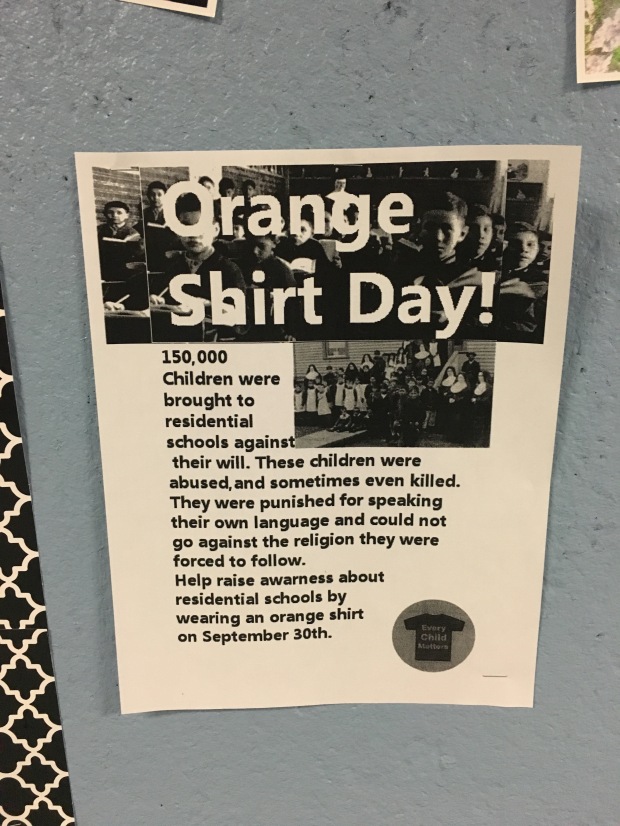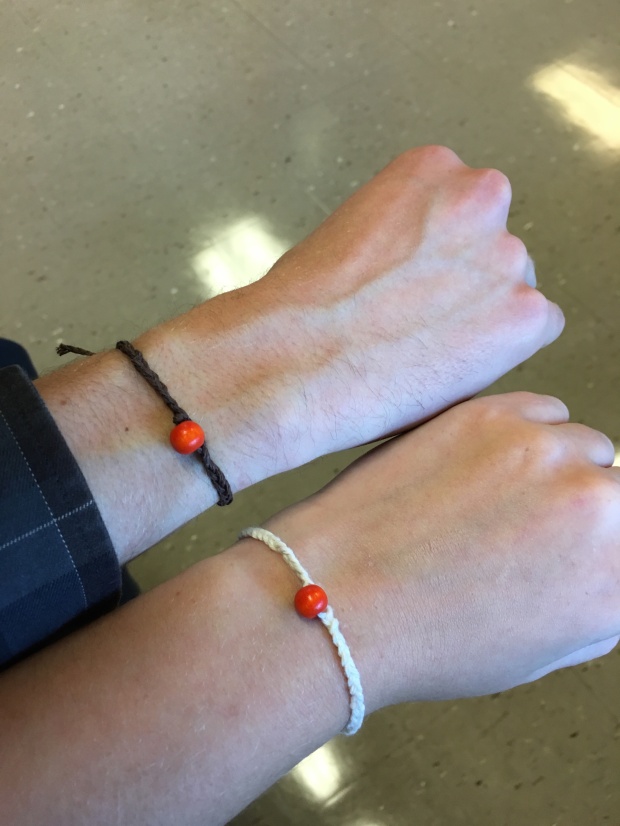Orange Shirt Day takes place on September 30th and is a day set aside to remember the Residential School System, the atrocities that happened there, and the consequences that are still in effect today. While the custom is to wear an orange shirt to show support and respect, two classes at Reynolds High School went even further. Social Justice 12 and Art 9 collaborated to create braided bracelets for every member of the school, both students and staff. Every bracelet was adorned with a single orange bead, each meant to represent a soul affected by the Residential School System. I had the fortune of watching these two classes pair up on their first day of bracelet-making, and it was a truly heartwarming experience. I’d like to briefly outline some of the things I observed about this collaboration.

Firstly, this partnership between the Social Justice and Art classes felt organic and positive. Grade 12s had the opportunity to mentor grade 9s, allowing for an interaction that wouldn’t be typical in high school. The Grade 12s began the class by each introducing themselves and stating (in a word or short phrase) what Orange Shirt Day means to them, demonstrating the significance of the activity in a way that allowed for individual interpretation while still addressing the objective of the project. The classes were then divided up in order to pair an even amount of Grade 12s with 9s. Grade 12s helped with braiding when necessary, and all were able to chat about the significance of the event together. By the end of just one session, the pile of bracelets was surprisingly large.
Secondly, the project engaged with and supported different types of literacies. The braided and beaded bracelets all hold meaning that cannot be “read” in the sense of reading a book, but can be understood in a cultural reading. Braids and beads carry extra significance in Indigenous societies, so the decision to create these bracelets for a reconciliation project was not unintentional.
Thirdly, the project was intended to benefit the entire school, not just the classes who were creating it. One of the First Nations Principles of Learning is that learning should not only support the self, but also the community, the family, the land, the spirits, and the ancestors. Social Justice 12 and Art 9 created a project that benefitted the entire school and paid respect to the living and dead members of residential schools and anyone else the schools affected. In wearing the bracelets, the message is also brought out into the greater community and opens up conversations about their meaning. Although I wasn’t at Reynolds on September 30th, on October 5th, the majority of people at the school (myself included) were still wearing their bracelets.

Events like Orange Shirt Day seem to bring out the best in our school system. Students get to collaborate together doing work that really matters and that has immediate, visible effects. The interactions (and later, the outcomes) that I witnessed from this project made me hopeful about our future generations. I can’t wait to see more examples of projects like this one and witness more inclusions of Indigenous Learning Principles in our classrooms.
Takeaways:
(1) Consider collaborating with another classroom for a project. If you want your students to do an art project but don’t have the skills or resources, collaborate with an Art class. Talk to other teachers in your school to see who would be willing to collaborate, and work from there. Maybe a science and math class can collaborate to create bridges to measure strength. Maybe an English and Music class can collaborate to study lyrics as poetry. The options are endless.
(2) Create opportunities for Social Activism within your school. Research important days and ask your students for ideas about what to do to commemorate them. Follow through.
(3) When designing these projects, make sure students of all abilities can participate.